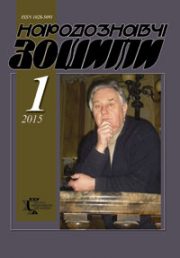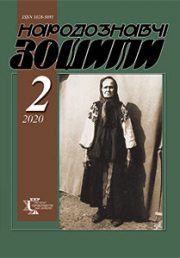The Ethnology Notebooks. 2019, 1 (145), 179—184
UDK 745(477.75)
DOI https://doi.org/10.15407/nz2019.01.179
CONTEMPORARY RESEARCH OF A GROUP OF FABRICS FROM THE COLLECTION OF BAKHCHISARAY RESERVE
AKCHURINA-MUFTIEVA Nuriya
ORCID ID: https://orcid.org/0000-0001-9788-1630
Dr. hab. of Arts, Professor
Crimean Engineering and Pedagogical University
21, Sevastopol str., 95015, Simferopol,
Autonomous Republic of Crimea, Ukraine
Contacts: e-mail: Akchurina_05@mail.ru
Abstract. The article represents the results of a study of the group of Crimean Tatars fabrics of the stock collection of Bakhchisaray Historical and Cultural Reserve. The author of the article made an attempt at scientific attribution of items, research of techniques of decorative weaving, embroidery and ornaments. Ornamental motifs that were not previously described in the scientific literature are introduced for the first time.
Keywords: head cover, the Crimean Tatars, embroidery, weaving, pattern-ornament.
Received 2.01.2019
REFERENCES
Jeminov, R.R. (2011). The First Crimean Tatar National Museum. Qasevet, 38. 3—15 [in Russian].
Abduramanova, S.N. (2012). Traditional Crimean Tatar embroidery from the KRU BIKZ funds. Creativity of Baki Urmanche and actual problems of national art. (Materials of the International Scientific and Practical Conference, dedicated to the 115th anniversary of the birth of B.I. Urmanche). Kazan [in Russian].
Bodaninskij, U.A. (1930). Archaeological and ethnographic study of Tatars in the Crimea. An impression from the Crimean collection «Reconstruction of the national economy in the Crimea» (Vyp. 2). Simferopol’ [in Russian].
The book of receipts of the Bakhchisaray Historical and Cultural Reserve. 12 [in Russian].
Potapov, L.P. (1973). Umai is a deity of ancient Tьrks in the light of ethnographic data. The Turkological Collection, 1972. Moskva: Nauka [in Russian].
Kotov, V.G. (2010). The female deity Umai/Humai: a comparative characteristic. Izvestija AGU. Istorija, 4—2 (68), 111—114 [in Russian].
Cheremisin, D.V. To the study of Iranian-Turkic relations in the sphere of mythology. Retrieved from: http://www.sati.archaeology.nsc.ru/Home/pub/Data/?html=Cremis1.htm (Last accessed: 10.03.14) [in Russian].
Skobelev, S.G. Umai and Dzerasa are goddesses and sisters. Retrieved from: http://zaimka.ru/religion/skobelev_2.shtml (Last accessed: 10.03.14) [in Russian].
Roslavceva, L.I. (2013). Patterned weaving of the peoples of the Crimea in the collection of the State Museum of the East. Catalog of the collection. Moscow: GMV [in Russian].
Akchurina-Muftieva, N.M. (2008). Decorative and applied arts of the Crimean Tatars of the XV — first half of XX century: monograph. Simferopol: Simferopol city printing house [in Russian].
Scientific Archive KRU BIKZ. Fund. 16. Inventory 1. Case 11 [in Russian].
Scientific Archive KRU BIKZ. Fund. 16. Inventory 1. Case 4 [in Russian].
Chepurina, P.Ja. (1938). Ornamental sewing of the Crimea. Moscow; Leningrad: All-Union Cooperative Joint Publishing House [in Russian].







